In this section, which, as you can see has little relation to player pianos, I am showing my collection of early 1900's mantle clocks. As with player pianos though, the task of refinishing the fine and rare veneers, is pretty much the same. Art Deco mantle clocks look as great on a piano as they do on a mantlepiece; shelf; buffet and just about anywhere that has a level surface. In many cases these clocks stopped working years before, but only require the pendulum leader to be put back into beat to have a most beautiful and functional clock. While maybe not as accurate as a digital clock, I am sure you will agree that the following clocks have much greater character :
Mauthe Westminster Mantle Clock 1930's
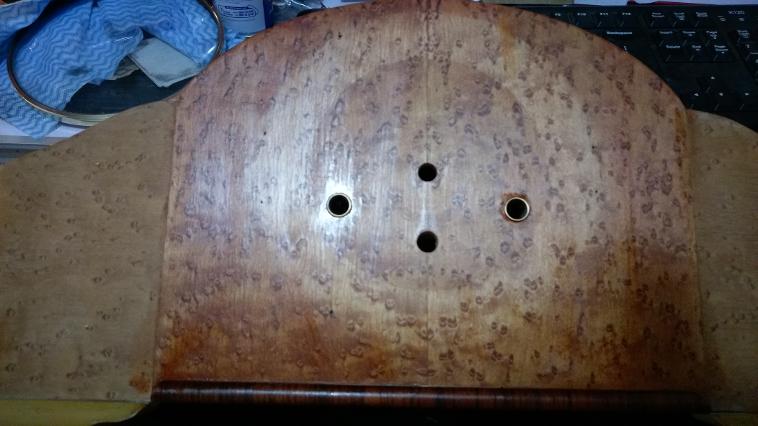
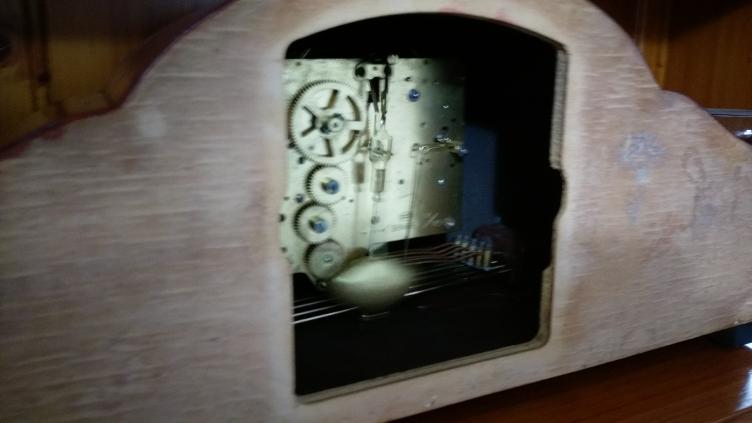
Original Mauthe (German made) ArtDeco Mantle Clock. Fully refinished Birdseye Maple case and featuring Westminster Chimes. The case is french polished and the movement is serviced and accurate. Stained maple and hand rubbed french polish a feature. This clock required reseating in it's case , a full service and oiling and resequencing of the chime wheels.
Jauch Triple Chime Mantle Clock 1930's
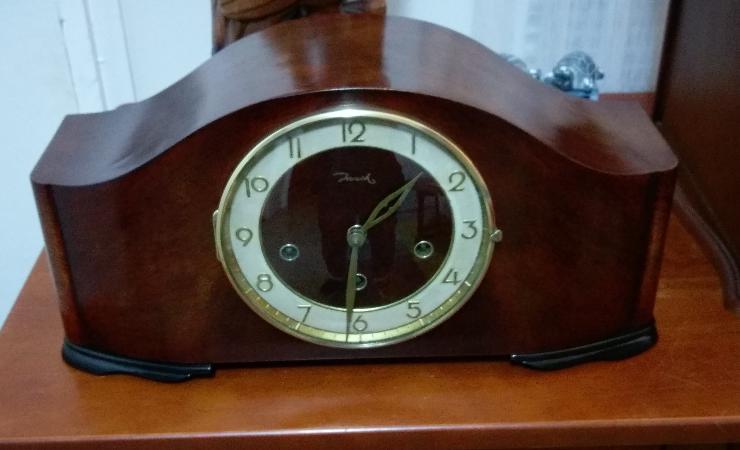
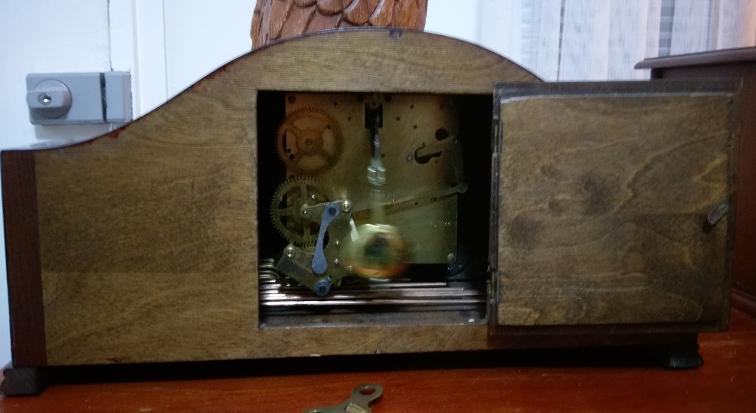
These pictures of the Jauch triple chime 3 x train movement show the fine German engineering and design that makes a top notch clock. The most beautifully toned chimes produce a selection of; Westminster; Whittington and St. Michaels with a lever selector hidden in the uppermost dial under the bezel.I estimate manufacture to be late '30's. Full case restoration with hand rubbed french polishing a feature. Also required reseating of the movement within the case; cleaning; service; oiling and re-sequencing of it's chime wheels.
German made 1937 Urgosvintage Westminster mantle clock
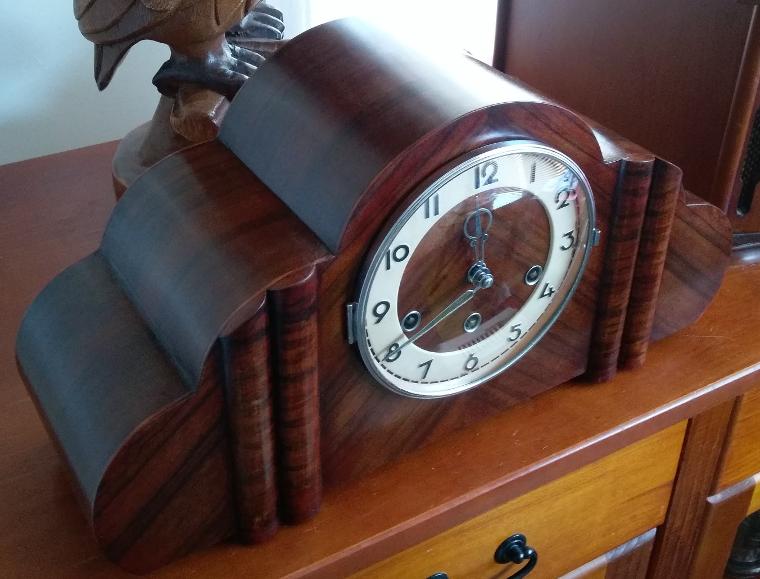
Beautiful representative of the ArtDeco period. Built in 1937 and superbly engineered. Five bar chime, only four are used to produce the Westminster chimes, the longest bar is only struck during the hour chimes. Full case restoration with hand rubbed french polishing a feature.
Urgos Abbey Series German mantle Clock with Westminster Chimes
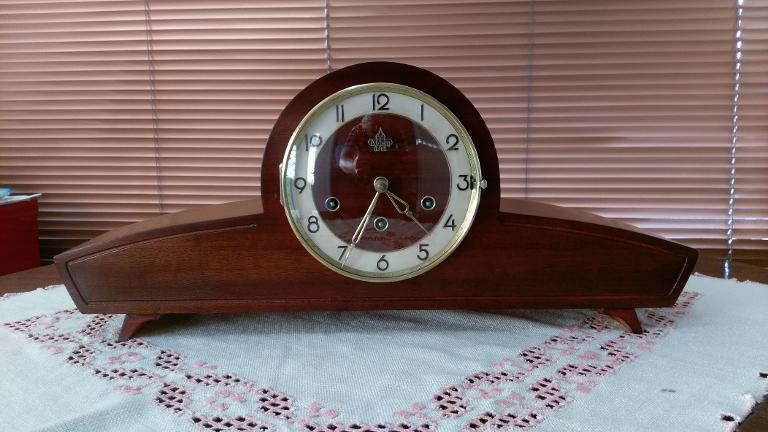
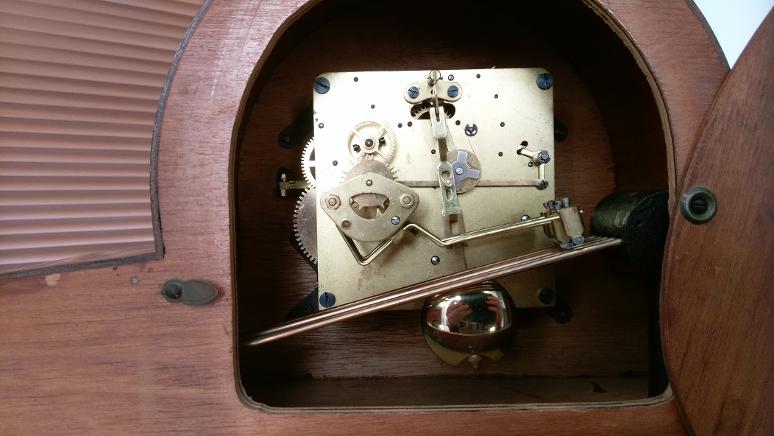

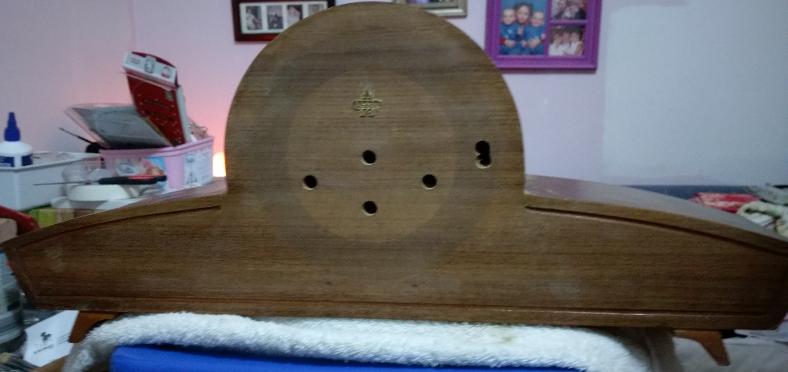
One of the most beautiful of the German mantle clocks is the Urgos Abbey series. Invariably styled wide in what I refer to as 'the atomic age style' magnificent chimes produced by the large case sets this clock apart from many '30's mantle clocks. High end quality and highest quality manufacturing. These ArtDeco representatives are becoming quite scarce and are very rarely found in this condition. Full case restoration with hand rubbed french polishing as a feature.
German Mantle Clock '30 -40's Standard Hour chimer
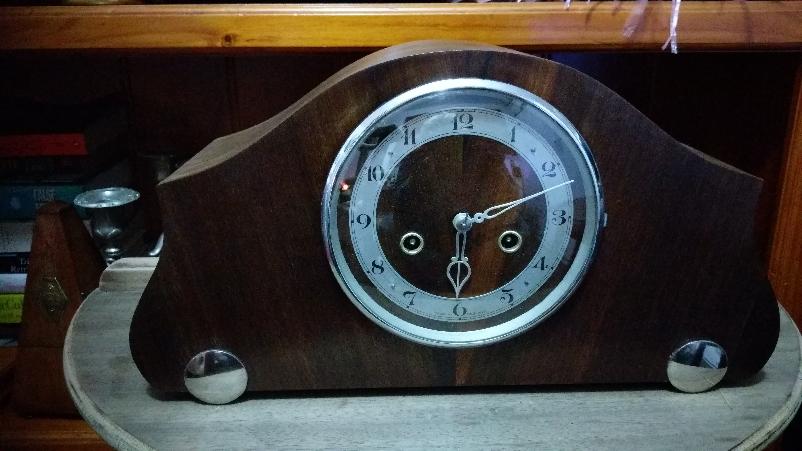
This nice small mantle clock is a fine representative of the Art Deco period. Featuring nickel plated feet ornamentation and finished with hand rubbed french polish. These clocks do not have bars to strike the chime, these units have a large curled blued steel gong (see above) that will chime the hour and once on the half hour. Reliable 2 train clock.
Europa German Mantle Clock 'Sunburst' 1950's
Europa Sunburst Mantle Clock, from the 1950's. It stands 25cm tall and is mostly comprised of brass. The movement is 7 jewel and it's an 8 day clock. There is nothing wrong with the movement, the most difficult part was polishing the brass. The acrylic dome is almost perfect. Many Sunburst clocks have crazing on the dome so badly, that you cannot see the hands.
E. Jauch 1930's GermanTriple Chime Mantle Clock
As design progressed, an innovation allowed triple chime or 8 bar movements to fit into smaller cases, depth wise; allowing these clocks to sit on narrow mantles and shelves. Simply building the chime hammers and strike wheel under the movement, removing the bulky apparatus at the rear of the movement and saving at least 2". Full triple chimes smaller case.
This 1930's E. Jauch triple chime movement from a mantle clock, arrived bathed in oil. That usually indicates a working problem. Oil is not a fix all for clock movements, while it is an absolute necessity to ensure pivot points and friction areas are lubricated, lubrication is minimal and with a specific clock grade oil. Avoid using sewing machine oil; 3 in 1 and WD40, they will carbonise over time and evolve into a cutting paste in the pivots, prematurely wearing the movement.
As it turns out, the only fault with this movement (after oil removal) was the crutch (above the pendulum leader) was down a fraction on one side. This restricted the full sweep of the pendulum making the clock unreliable. An easy fix with a screwdriver. Try to avoid resorting to oil if a problem seems difficult to diagnose.
Urgos German Mantle Clock 1954 Walnut Veneer. Westminster Chimes
This clock is 100% original. Nothing (other than dirt) has been removed. So the original stain and remaining shellac are still intact. Approximately 100 new coats of golden shellac have been added, hardened with walnut oil used throughout the french polishing process. Finally, the original satin finish was replicated by using 1200 grit w/d sandpaper with walnut oil as a final treatment to the new shellac and buffed with 0000 steelwool. The movement, presented with only a little dead oil, appears to have time machined from 1954. This clock was a real pleasure to restore.
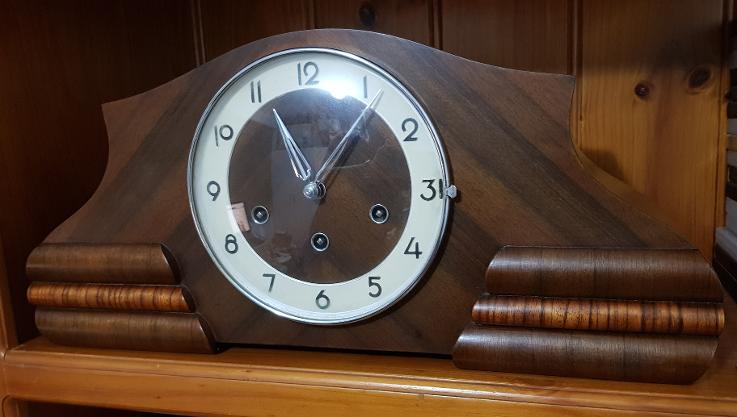
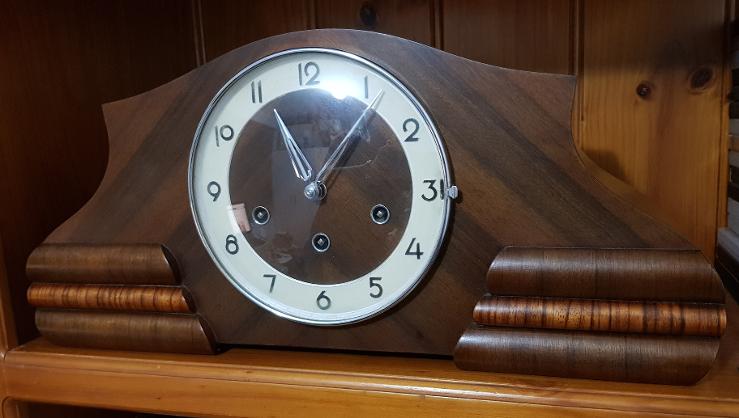
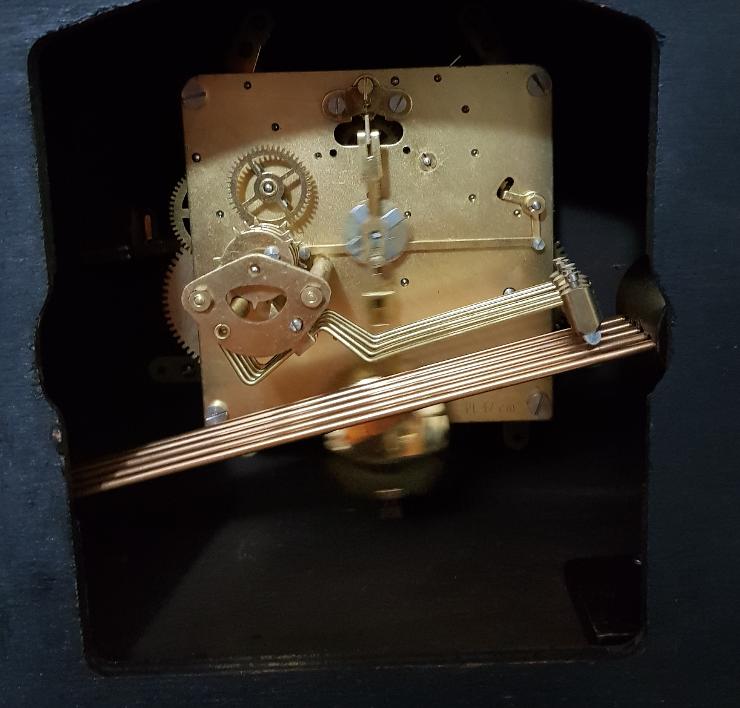
I should say that most mantle clocks of this age do not allow for a satin finish, due to imperfections in the veneer. A gloss finish will hide many sins and usually looks great (particularly when french polished). So when the rare opportunity of a case with no damage at all, not even a scratch, arrives, the original satin is exactly the right way to go. Satin brings out a warmth in the wood, lost with gloss.
Perivale (British) Westminster Mantle Clock ('30s to '40s)
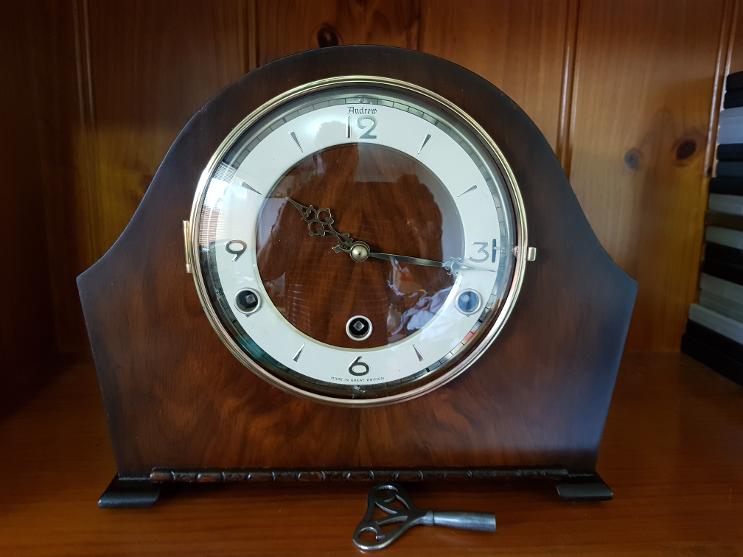
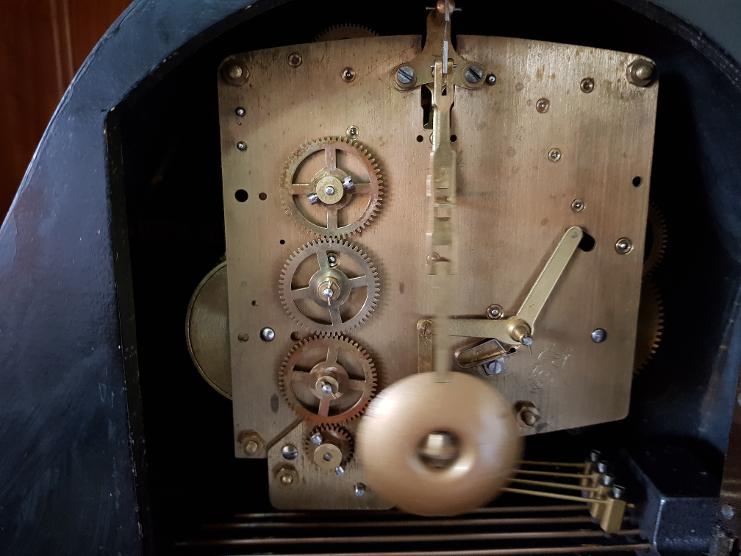
Manufactured by the British Perivale Clock Company from mid 1930's to mid 1940's, this little mantle clock has a powerhouse movement and soft Westminster chimes. Small in stature to accommodate smaller shelves and mantle pieces, this clock features the large and robust Perivale pendulum movement with chime block located directly under the movement, allowing for a depth of 4". Marked 'Andrew" after Andrew Perivale, there are a number of different models of similar size. This clock, like the Urgos above, is 100% original. The original tint and shellac are still there, incorporated into the new shellac, making it a faithful restoration to the age of the clock.
Urgos Triple Chime Art Deco Mantle Clock 60s
The following Art Deco style mantle clock is a German Urgos. Manufactured in the early '60s, Featuring triple chime which includes Westminster; Whittington and Winchester chimes. Required new mainsprings and full dismantle, clean andservice. The case required the replacement of veneer, repair of the shellac finish and polishing. Urgos remains a sought after and high quality movement.
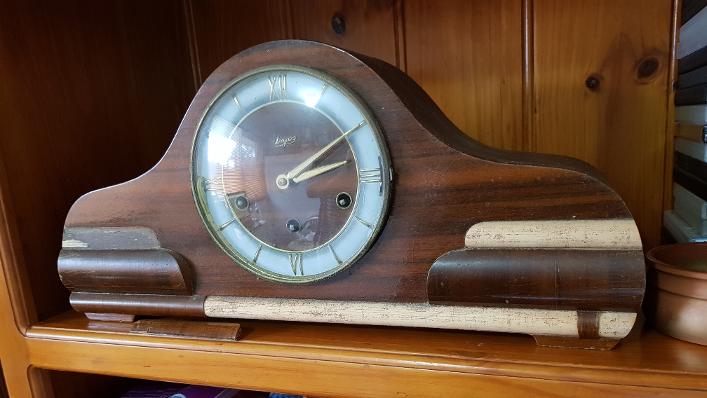

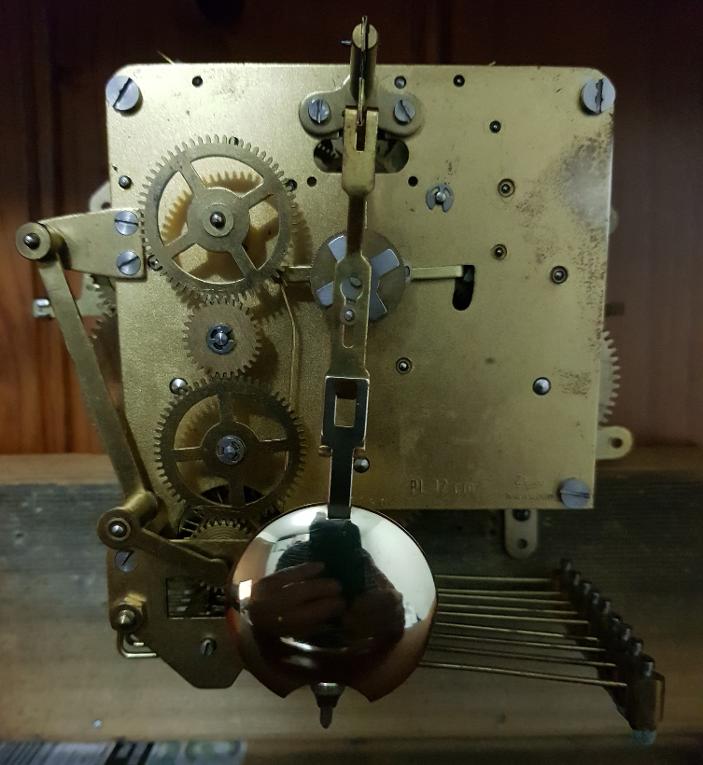
Glunz German Mantle Clock 30s
Large and rare, this mantle clock utilizes a platform escapement instead of a pendulum. The clock measures 60cm ( 2 feet) in width. Deep resonant Westminster chimes.
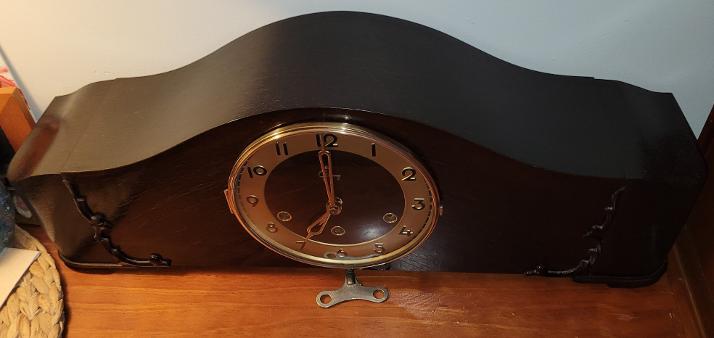
This page is under construction,. Thank you for your patience.